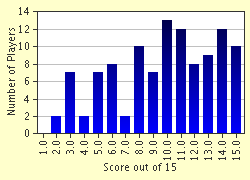Quiz Answer Key and Fun Facts
1. Let's start with the basics! Including the symphonic poem "Das Lied von der Erde," how many complete symphonies did Mahler write?
2. Which of the following Mahler symphonies does NOT contain at least one choral or vocal movement?
3. Which Mahler symphony's first movement contains a fondly nostalgic theme meant to depict the composer's wife Alma?
4. The popular "Fifth Symphony" opens with a stunning trumpet fanfare in C-Sharp minor. But this fanfare is explicitly foreshadowed in the first movement of a previous symphony. Which one is it?
5. "Das Lied von der Erde" is based on texts which were originally written in which language?
6. Which is the longest of the Mahler symphonies?
7. Some speculate that the third movement of the "First Symphony" ("Titan") was strongly influenced by Mahler's Jewish heritage. What popular melody lies at the heart of this movement?
8. Mahler often drew upon various themes from his song cycles and incorporated them into his symphonies. Often thought of as the "eye of the storm," the serene fourth movement of the "Second Symphony" ("Resurrection") is one such example. From which song cycle is this movement adapted?
9. The astoundingly beautiful fourth movement ("Adagietto") from the "Fifth Symphony" (featured in the film "Death in Venice") is arguably Mahler's most famous work. The "Fifth Symphony" itself is in C-Sharp minor, although it concludes in D Major. In which key is the fourth movement based?
10. The enormous "Eighth Symphony," dubbed the "Symphony of a Thousand," makes use of a couple hundred instruments and vocalists. On which famous literary work did Mahler base the second part of this symphony?
11. It is fair to say that the majority of Mahler's symphonies end with "a bang." Which of the following, by contrast, ALL end in a whisper?
12. Likewise, most of Mahler's symphonies open rather flamboyantly. Which of the following, by contrast, ALL begin in an unambiguously subdued manner?
13. In which symphony does Mahler write parts for both a cowbell and xylophone?
14. Which of the following symphonies adhere to the traditional four-movement format?
15. In homage to Mahler, let's end on a bang ourselves! What does the German word "aufstehen" mean, and how does it relate to the Mahler symphonies?
Source: Author
frogthoven
This quiz was reviewed by FunTrivia editor
Bruyere before going online.
Any errors found in FunTrivia content are routinely corrected through our feedback system.

